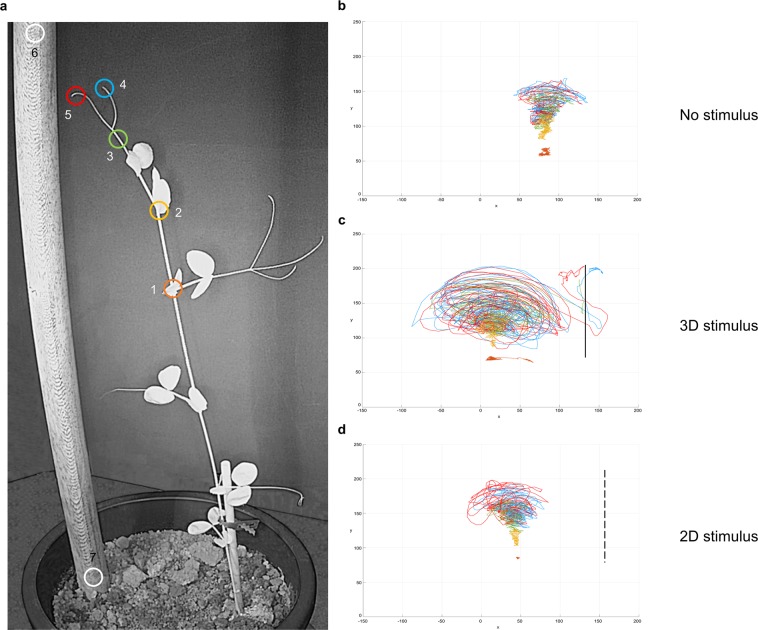Figure 2.
The considered landmarks of the plants and representative examples of their spatial trajectories. (a) Landmarks that were tracked in time through video digitalization procedures: the internode (1), the apex (2), the node below the tendrils (3), and the tips of the tendrils (4 and 5). Markers 6 and 7 were positioned upon the stimulus and served as reference points. The colours of the circles correspond to the colour of the trajectories represented in the other panels for the corresponding landmark. The projected trajectories on the vertical plane of the considered landmarks for the no stimulus (b), the 3D stimulus (c) and the 2D stimulus (d) conditions. The vertical line represents the 3D (solid line) and the 2D (dashed line) stimulus. Circumnutation is particularly evident for the landmark corresponding to the node below the tendrils (green line) and for the tendrils (light blue and red lines). For the apex (yellow line) circumnutation is less pronounced and directed towards the light source. When the stimulus is 3D the tendrils veered towards the stimulus and stopped at the time grasping occurred (c). When there is no stimulus (b) or the stimulus is 2D (d) the tendrils stop to circumnutate and remain far apart. Axis x = sagittal axis in mm; axis y = vertical axis in mm.

